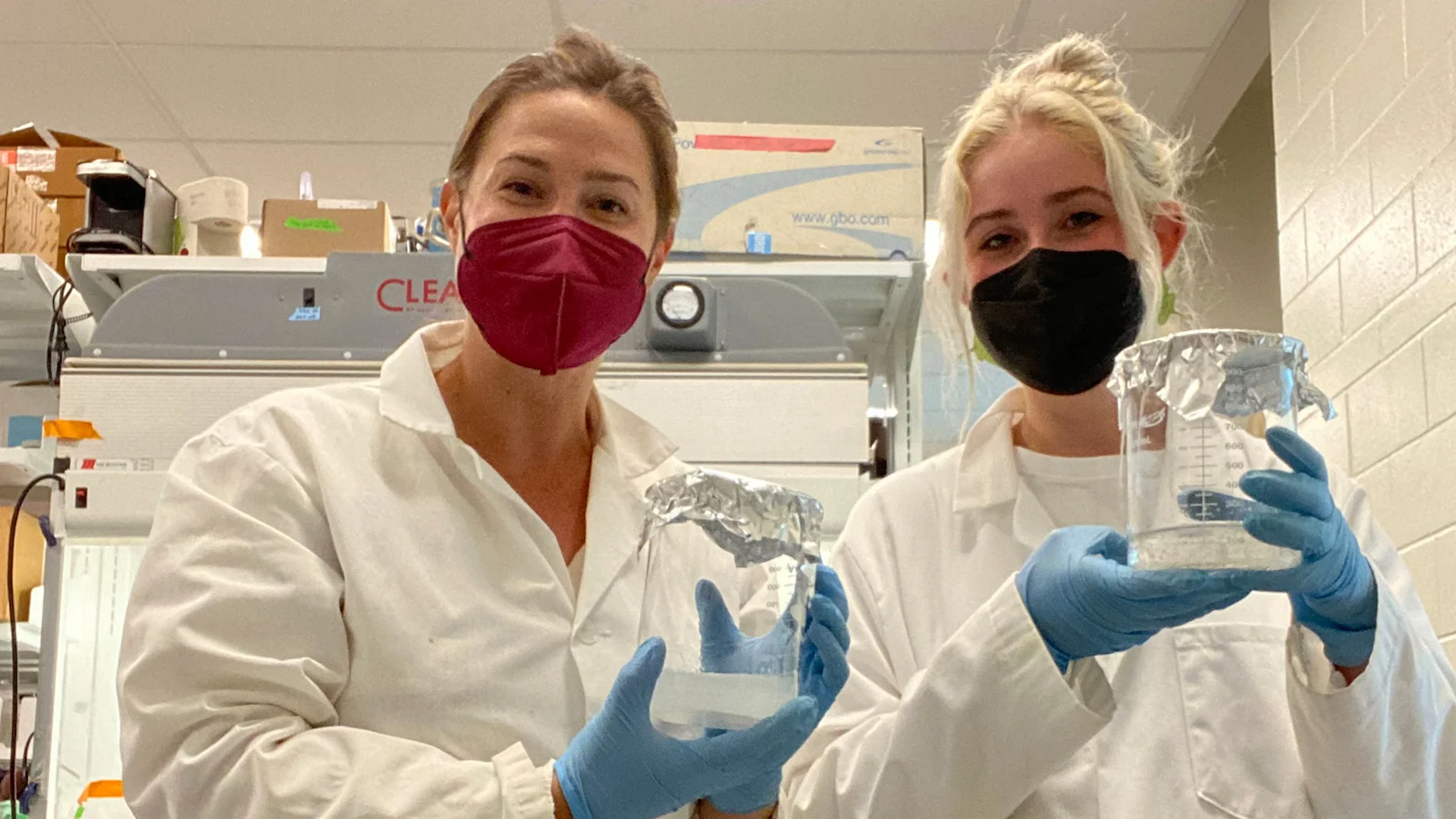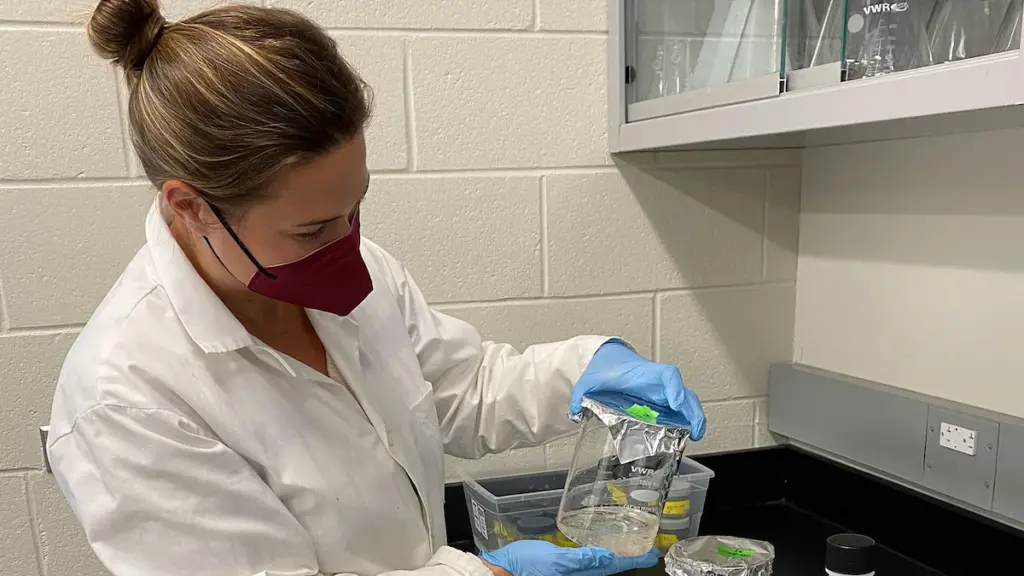Microplastics in Protein Products Concerns All Consumers
New Ocean Conservancy and University of Toronto Trash Team research found microplastics in nearly 90% of protein samples

This blog was written by Hannah De Frond, Ocean Conservancy Consultant and International Trash Trap Network Coordinator and Madeleine Milne, Ocean Conservancy Consultant and University of Toronto Graduate Student.
Factors like price, packaging and health value often influence what products people choose when walking down the aisle of a grocery store. What people may not be thinking about is something that we are surrounded by every day: microplastics—pieces of plastic less than five millimeters in size.
Microplastic pollution has been found in every ecosystem on Earth, from the depths of our ocean to remote mountain peaks. Microplastics have even been found in the air we breathe and the food we eat, meaning that humans consume microplastics daily. In fact, the saying “You are what you eat” rings true—microplastics have been detected in humans’ bodies (including in human blood, lungs and placentas).
Get Ocean Updates in Your Inbox
Sign up with your email and never miss an update.
These facts alone are scary to think about, and one big question is, “What does this mean for human health?” To answer this and inform risk assessments, we need to understand the amount of microplastics that humans are consuming on average and better understand the chemical and physical effects that microplastics can cause in the human body.
To date, most studies investigating microplastics in food items have focused on seafood (fish and shellfish), leaving other foods understudied. For example, terrestrial meats (beef, pork, chicken) have barely been studied, despite making up almost 90% of meat products in an average American diet. To fill this knowledge gap, Ocean Conservancy partnered with researchers from the Rochman Lab at the University of Toronto to study 16 commonly consumed protein products for microplastic contamination, ranging from fresh-caught fish to highly processed plant-based burgers. We purchased products directly from fishing boats and organic and conventional grocers and bought different brands of the same products to assess how these factors might influence microplastic contamination.
Microplastics were found in all 16 products tested and 88% of samples, including seafood, terrestrial proteins and meat-alternative products like tofu. On average, we found 74 microplastics per serving of any given protein. Through a survey of United States adults, we also collected data on average consumption patterns for the products analyzed to develop an estimate of annual microplastic exposure. Based on our results, we estimate that the average U.S. adult could consume up to 3.8 million microplastics annually from the combined average intake of 13 protein products.*
When different products were compared, greater microplastic contamination was found in highly processed products, suggesting that processing steps (e.g., cutting, introduction of other ingredients or packaging) may introduce plastic contamination into food. This shows that more research is needed to identify the sources of contamination from processing and inform actions to reduce it. We also found that microplastics are a concern for all consumers, no matter your diet or shopping preferences, as no differences were found between microplastic contamination in seafood, terrestrial and plant-based products, between different brands of the same product or even between conventional supermarkets and higher-end natural grocers.

The results of this study demonstrate that microplastics are widespread in our food system. It is not just a seafood issue; it is something that affects us all. We hope that the results of this work propel further research into microplastics in food products, including other proteins, fruits, vegetables and grains to gain a better understanding of microplastic consumption from our whole diet. Although it is important to pinpoint where microplastics in the food system are coming from, addressing the microplastic pollution crisis more broadly is one surefire way to make an impact. For example, microfibers were the most common shape of microplastic found across all samples, which suggests that efforts to reduce microfiber pollution, the installation of washing machine filters, for example, is one way to help mitigate this problem.
That’s why Ocean Conservancy is advocating for legislation at the local, state and federal levels to address microplastic pollution and reduce microplastic emissions to protect food safety and human health into the future. Read our full research paper here.
*Products included: breaded shrimp, minced pollock, fish sticks, white Gulf shrimp (headless/shell-on), Key West pink shrimp (headless/shell-on), Alaska Pollock fillets (skinless), chicken nuggets, top sirloin steaks, pork loin chops, chicken breasts, plant-based nuggets, plant-based fish sticks, plant-based ground beef and tofu blocks.